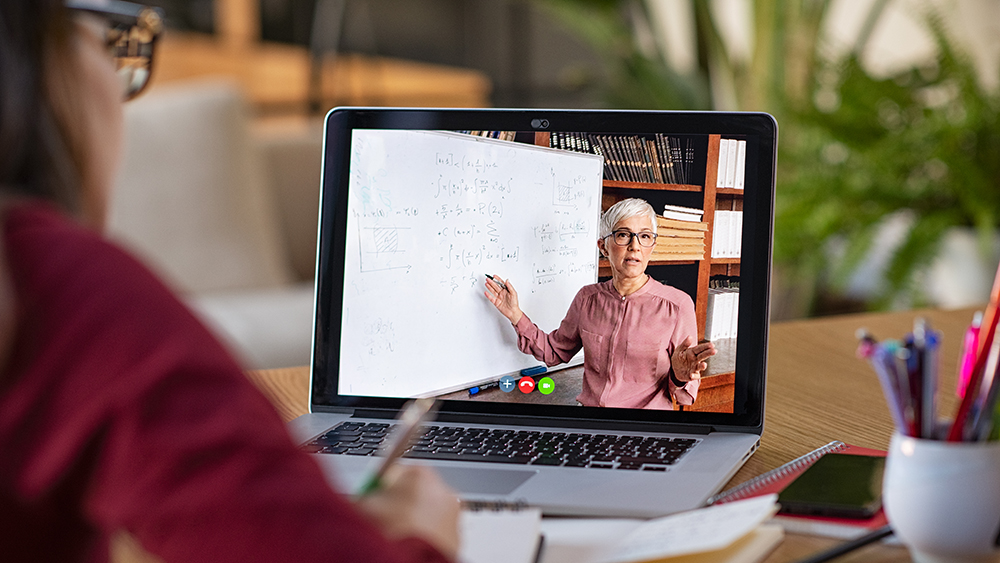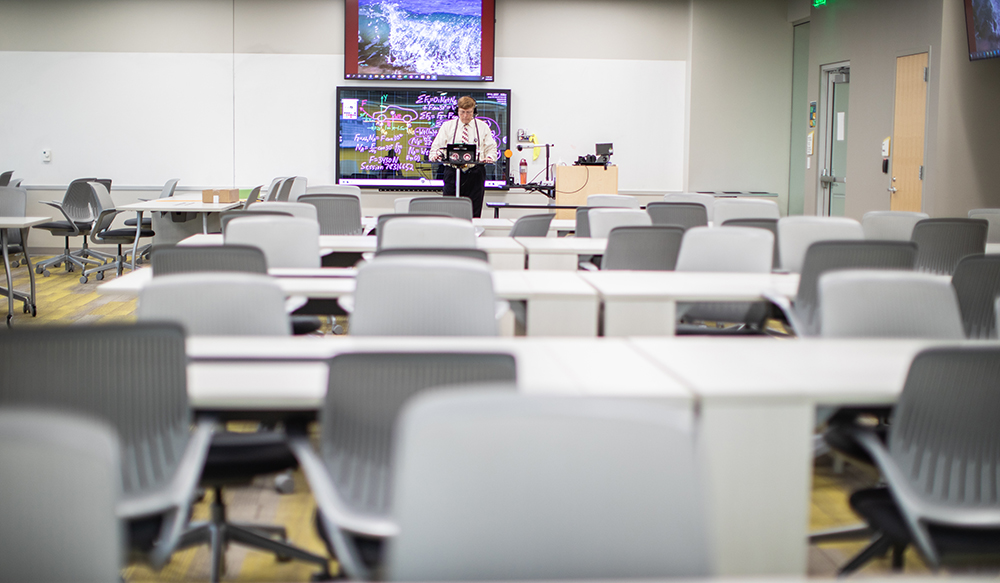
As more than 20,000 students transition into an online learning environment, the quality of the education students receive in the Texas A&M University College of Engineering continues to be of utmost importance. Engineering personnel have stepped up in many ways to make the transition as easy as possible.
The Engineering Studio for Advance Instruction & Learning (eSAIL) has been conducting seminars on using applications such as Mediasite for lecture capture, Google Classroom, eCampus and Zoom, along with other applications like Packback, which encourages students to ask and answer open-ended questions. Each faculty member conducts their online teaching with their preferred methods
Dr. Sunay Palsole, assistant vice chancellor for engineering remote education, said the initial goals were to introduce and train faculty on the various technologies available to them during this transition, introduce them to best practices using evidence-based approaches (research and faculty panels) and guided pedagogy. The process loosely follows three steps: create course content, deliver course content and assess learning.
“Faculty seem to be adapting reasonably well overall,” Palsole said. “The kinds of questions we are getting now also speak to their adopting the technology and thinking about how to creatively engage the students and assess learning.”
Shayla Rivera, director of ENGR[x] and professor of practice in the College of Engineering, teaches ENGR 482, engineering ethics. She said everyone teaching the course brainstormed to decide the best teaching approach for the students. Each team recorded lectures using lecture capturing, which they showed to students live via Zoom, allowing students to connect with faculty if they had questions or comments, followed by a comprehensive discussion using Packback.
“So, the result is that our students still attend class at the appointed time and have open discussions about what is presented,” Rivera said. “So far I am exceedingly impressed with the attendance and the participation of our students.”

Palsole said for course creation, some faculty choose to come in to the classroom they might have been using for lecture capture using Mediasite. These lectures are processed, captioned and then delivered in eCampus or in some cases on-course sites they have built. Some faculty use Zoom to deliver live lectures that are recorded, closed captioned and shared with the students either on eCampus, Google Docs or other modalities. Other faculty like Rivera use the Mediasite Desktop Recorder or Zoom (or other tools such as Camtasia) to create the lecture content and distribute it.
“Engineering was better positioned than most I think for the transition,” Palsole said. “ We have a great team in eSAIL, and Engineering IT has been fantastic in provisioning the technologies needed by the faculty to make the change and providing the necessary support. Any issues that come up is dealt with fairly quickly by the administrative teams in place and even in this rapid move to online, I think we have done well overall.”
Junior industrial distribution student Anjali Dhanani said that while her professors have chosen various ways to teach their classes, they have a common goal.
“All my professors and my lab instructors are trying to help us any way they can as they are going the extra mile to be more accessible to us during this time and making sure we understand key concepts in the curriculum,” she said.
Dhanani said that while learning online can’t replace the hands-on approach she had in her regular classroom instruction, she has seen advantages to online learning, which has even seemed to bring the faculty closer to the students.
“Most of my professors have changed how they teach,” she said. “For example, one of my professors would only just go through the content and answer the couple questions and end the lecture. Now he has become more conversational getting to know us, asking about our dogs in the background or why our background looks like we’re in Hawaii. What has happened currently has impacted us all one way or another. The professors have adapted in a way that I feel we have all gotten even closer to becoming an Aggie family even though all classes are online.”
Rivera agrees that their perspectives have changed as teachers. She said everyone has had to work together and support each other in order to succeed. They had to reassess what needed to be in the curriculum going forward, which made them take a deeper look at the material. Since they were not going to be face to face with students, they also discussed how to be more engaging and become better lecturers.
“Personally, I see this moment in time as a great ‘correction’ of sorts,” she said. “A time when we are all having to look into areas we had not considered before in our teaching. We are adapting and looking for ways to help our students participate more and feel more included. These are ideas we tend to leave behind when routine sets in sometimes. So, I see the wake-up call to be the best we can all be for our students and for ourselves.”
This feeling of connection is one that exists throughout the College of Engineering, which has set up numerous online programs and other opportunities for students’ education, along with a COVID information site to provide the latest updates.
“I think it is great that the College of Engineering has created competitions/programs online now and made many of their in-person workshops into webinars. This will definitely help students to continue applying the knowledge they are learning and help with professional development,” Dhanani said. “I am one of the many students who had their internships pushed back or canceled because of COVID-19 and because of this, I know we are all trying to get back up and show companies we are an asset to them and the college is helping us do just that. I could not be more grateful that as Aggies we always have each other’s back.”